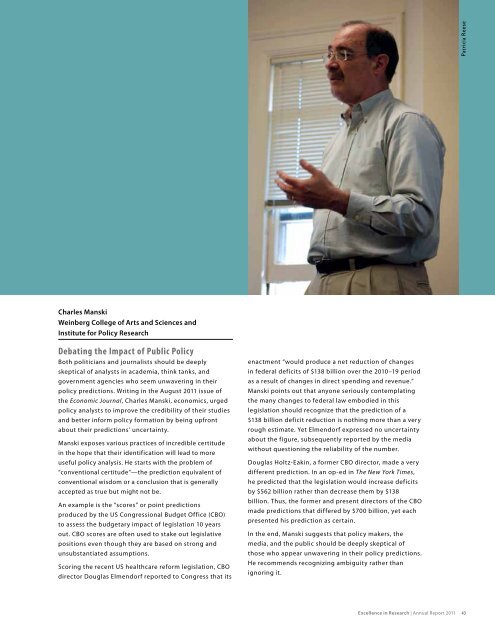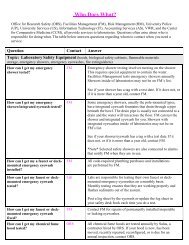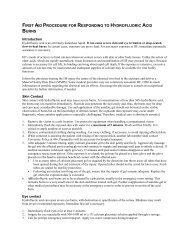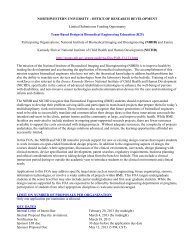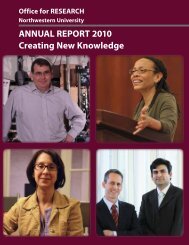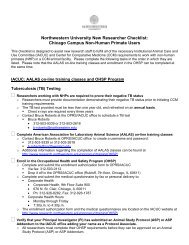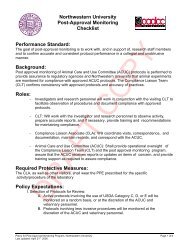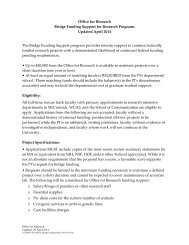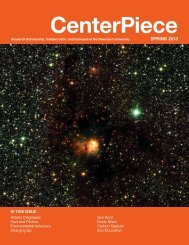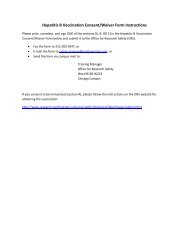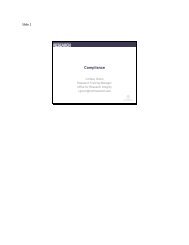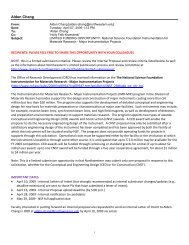annual report 2011 - Office for Research - Northwestern University
annual report 2011 - Office for Research - Northwestern University
annual report 2011 - Office for Research - Northwestern University
Create successful ePaper yourself
Turn your PDF publications into a flip-book with our unique Google optimized e-Paper software.
Charles Manski<br />
Weinberg College of Arts and Sciences and<br />
Institute <strong>for</strong> Policy <strong>Research</strong><br />
Debating the Impact of Public Policy<br />
Both politicians and journalists should be deeply<br />
skeptical of analysts in academia, think tanks, and<br />
government agencies who seem unwavering in their<br />
policy predictions. Writing in the August <strong>2011</strong> issue of<br />
the Economic Journal, Charles Manski, economics, urged<br />
policy analysts to improve the credibility of their studies<br />
and better in<strong>for</strong>m policy <strong>for</strong>mation by being upfront<br />
about their predictions’ uncertainty.<br />
Manski exposes various practices of incredible certitude<br />
in the hope that their identification will lead to more<br />
useful policy analysis. He starts with the problem of<br />
“conventional certitude”—the prediction equivalent of<br />
conventional wisdom or a conclusion that is generally<br />
accepted as true but might not be.<br />
An example is the “scores” or point predictions<br />
produced by the US Congressional Budget <strong>Office</strong> (CBO)<br />
to assess the budgetary impact of legislation 10 years<br />
out. CBO scores are often used to stake out legislative<br />
positions even though they are based on strong and<br />
unsubstantiated assumptions.<br />
Scoring the recent US healthcare re<strong>for</strong>m legislation, CBO<br />
director Douglas Elmendorf <strong>report</strong>ed to Congress that its<br />
enactment “would produce a net reduction of changes<br />
in federal deficits of $138 billion over the 2010–19 period<br />
as a result of changes in direct spending and revenue.”<br />
Manski points out that anyone seriously contemplating<br />
the many changes to federal law embodied in this<br />
legislation should recognize that the prediction of a<br />
$138 billion deficit reduction is nothing more than a very<br />
rough estimate. Yet Elmendorf expressed no uncertainty<br />
about the figure, subsequently <strong>report</strong>ed by the media<br />
without questioning the reliability of the number.<br />
Douglas Holtz-Eakin, a <strong>for</strong>mer CBO director, made a very<br />
different prediction. In an op-ed in The New York Times,<br />
he predicted that the legislation would increase deficits<br />
by $562 billion rather than decrease them by $138<br />
billion. Thus, the <strong>for</strong>mer and present directors of the CBO<br />
made predictions that differed by $700 billion, yet each<br />
presented his prediction as certain.<br />
In the end, Manski suggests that policy makers, the<br />
media, and the public should be deeply skeptical of<br />
those who appear unwavering in their policy predictions.<br />
He recommends recognizing ambiguity rather than<br />
ignoring it.<br />
Patricia Reese<br />
Excellence in <strong>Research</strong> | Annual Report <strong>2011</strong> 43


